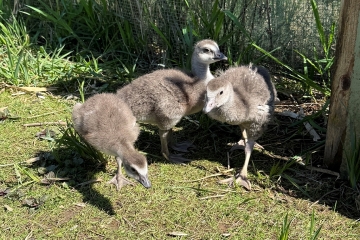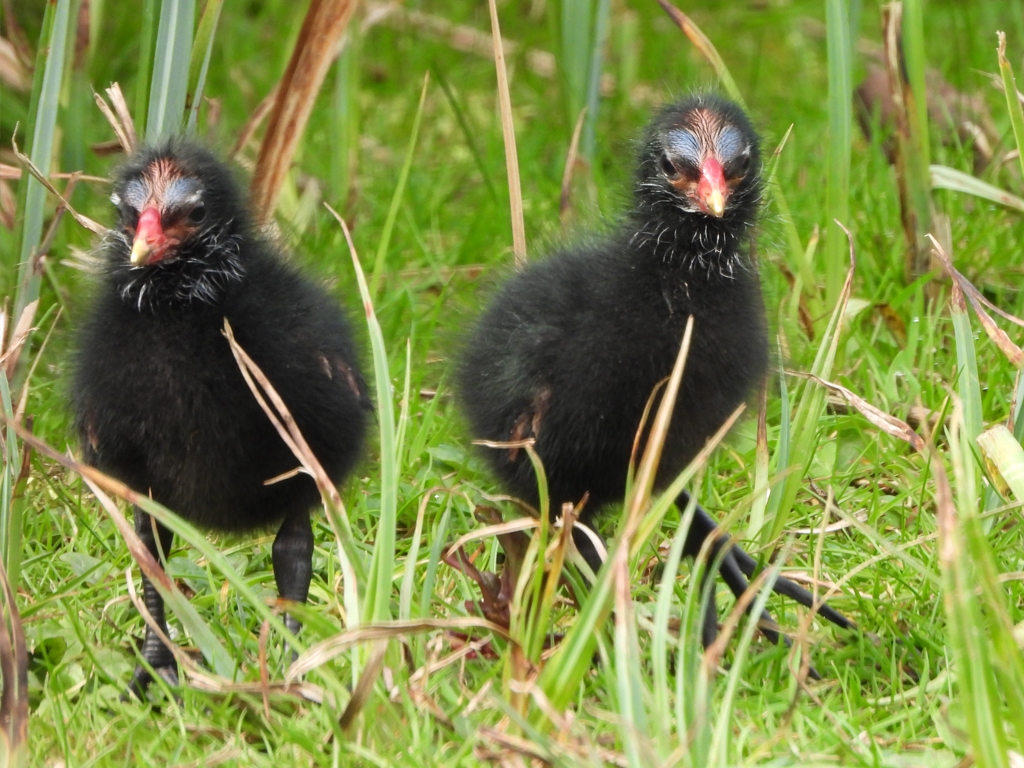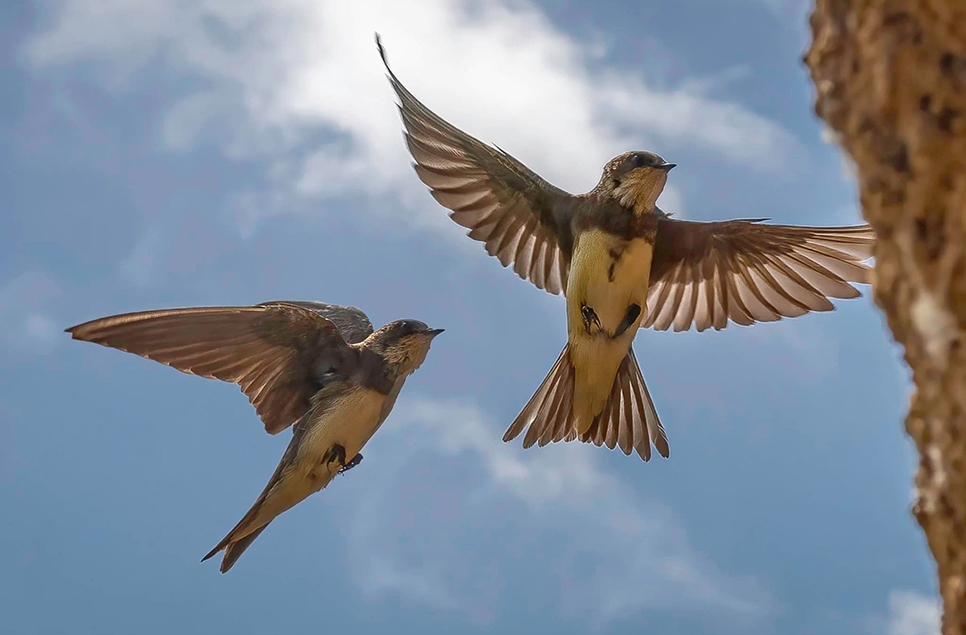Breeding season for the WWT Arundel collection
The breeding season is underway! Head Keeper Sam McKinlay and the Collection Team of Keepers are busy keeping a watchful eye on the birds in our WWT collection of threatened and endangered birds they care for at Arundel Wetland Centre.
New Incubation and Rearing room
Our new Incubation and Rearing should be finished mid-May. The eggs of some rarer ducks or those in international breeding program are placed in incubators and the youngsters reared in tanks by our Keepers. One windows on the new building will have views of the incubators and eggs with information about Arundel’s breeding programs. The second window will offer views of three rearing tanks and the ducklings inside.
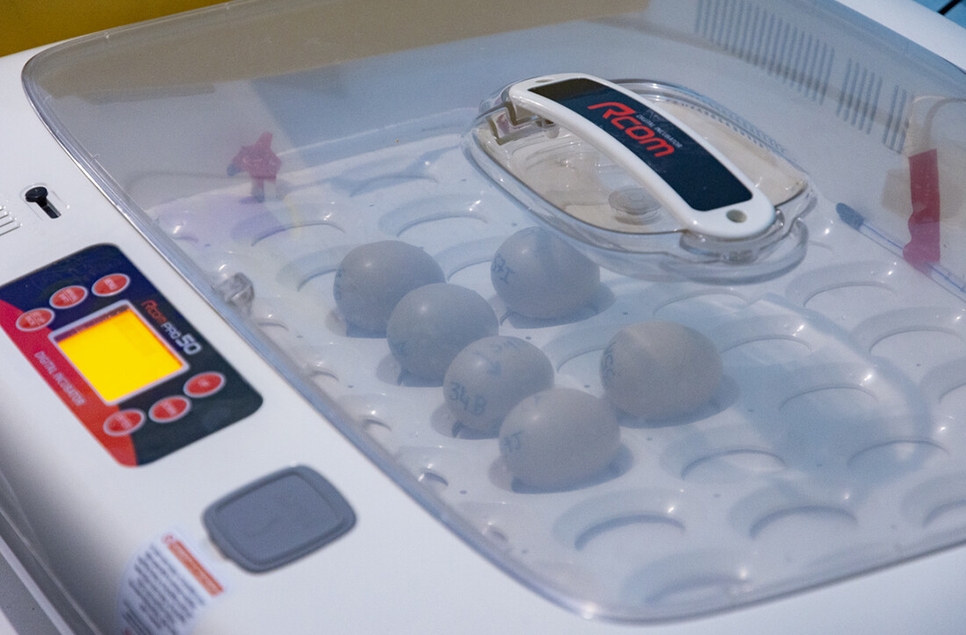
We have been converting our old Pond Explorer building into the Incubation and Rearing Rooms since January. This rearing room is located near to the existing outdoor duckery, where goslings, ducklings and cygnets are kept until they are old enough to go into exhibits.
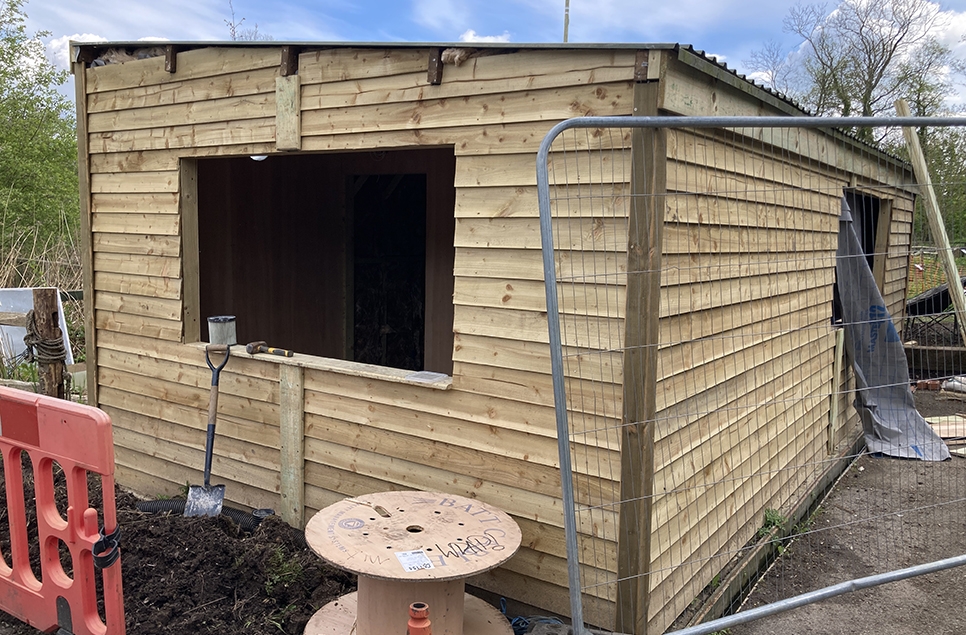
New Incubation and Rearing rooms with viewing windows scheduled to finish mid-May.
Cooper the new Nene gosling
Cooper the Nene gosling was the first baby of 2024 in our collection to hatch at Arundel, hatching out on March 23rd. Nene geese, also known as Hawaiian geese originate in warmer climes with a breeding season that starts in February. They are the first species that our founder Sir Peter Scott bred at WWT Slimbridge and reintroduced to Hawaii, saving them from extinction.
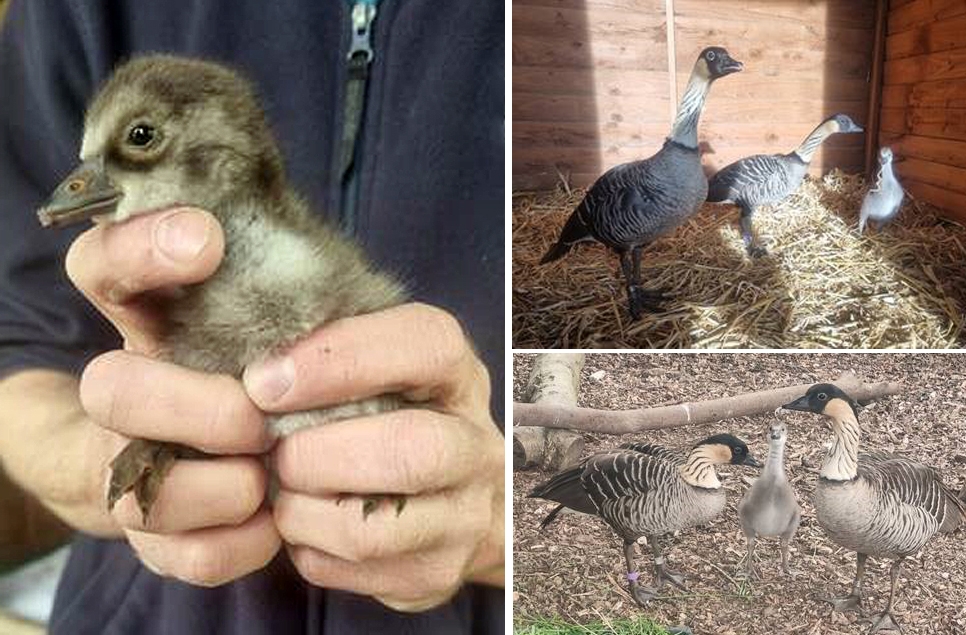
Our Keepers moved the nene parents off show to our barn before Cooper hatched. Now that Cooper is a gangly, 5 week-old they hope to move the family into our outdoor duckery soon.
Who is in the duckery?
The Keepers are tracking all our collection birds - counting them each day and watching who is nesting and where. Some families are moved off show to our netted duckery before the ducklings or chicks hatch to keep them safe. Some birds are left to parent-rear their young while some rarer birds in breeding programs may have their eggs hand reared.
Currently in the duckery this spring the Keepers have pairs of Hooded mergansers, Australian wood ducks, Javan whistlers, Baikal teal and Ringed necked ducks, and are hoping for breeding success. If they lay eggs, these ducks will parent rear their broods in the safety of this netted outdoor 'duck nursery'.
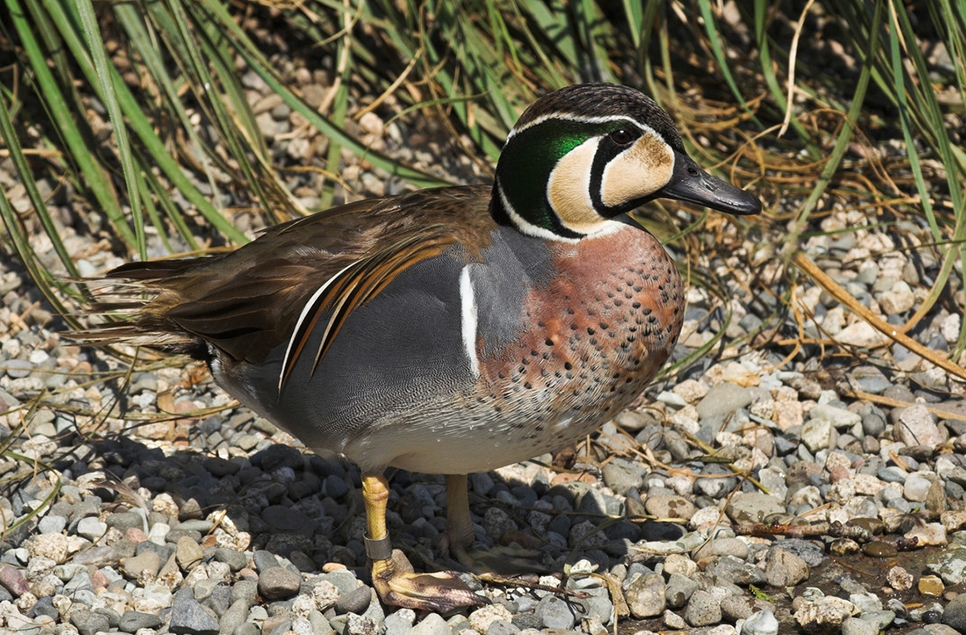
Sea ducks & waders
In the Coastal Creek aviary we expecting eggs from several of the sea ducks. The Harlequin ducks have nearly finished their breeding season having started in early March. Directly beside the Coastal Creek aviary are the netted off-show areas where we move any sea duck families that hatch.
We are hoping the black-necked grebes in our Waterfalls exhibit will breed again this year.
Where will new birds go?
Some of the birds that hatch out this season at Arundel Wetland Centre may remain here while others may be moved to other WWT centres and zoos across the UK. Endangered species belonging to the EEP programme may even end up abroad in other countries as part of conservation programs.
Ready to visit?
If you've been inspired to explore Arundel Wetland Centre, find out more and plan your visit online.
Plan your visit
Ready to visit?
If you've been inspired to explore Arundel Wetland Centre, find out more and plan your visit online.
Plan your visit